New book, gallery show, and talk look back at photographer Mark I. Chester’s vital, historic work in the leather-BDSM community.
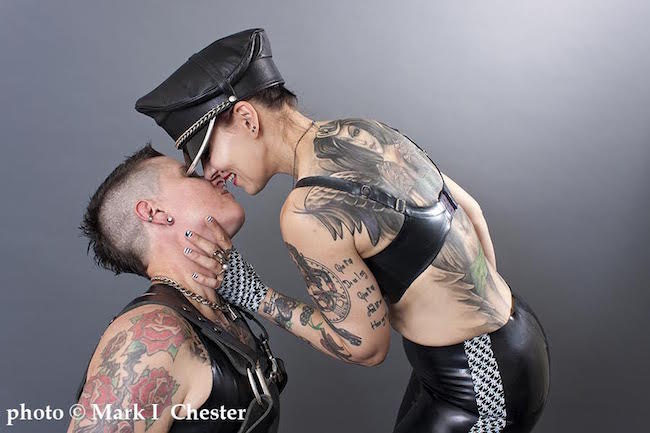
By Marke B.
ART LOOKS He’s been called “Leather’s Proust” by famous sexologist Gayle S. Rubin, and his familiar presence in the leather-BDSM scene is a big part of underground San Francisco history. Now, with a gorgeous retrospective book, City of Wounded Boys & Sexual Warriors, and accompanying gallery show at the Center for Sex and Culture, photographer Mark I. Chester brings together his work from 1977 to the present for the first time.
(The book launch, official gallery show opening, and a slideshow talk by Chester will take place at CSC on Fri/18, 6:30pm-10pm, free. The gallery show is running through September. You can preview the self-published book here and purchase it here.)
Rubin contributes an essay to the book, and remarks on the leather scene’s “stubborn persistence” in SoMa — despite catastrophes like AIDS and the devastating Folsom Street Fire of 1981, persecution and scapegoating by politicians and police, and skyrocketing rents, gentrification, and lack of working class jobs. Flipping through City of Wounded Boys & Sexual Warriors turns out to be an emotional as well as aesthetic experience. It tells a story of an underground culture’s history and resilience despite continued adversity, and Chester cannily turns his camera on subjects that reflect and subvert major gay cultural shifts, like acceptance into the military.
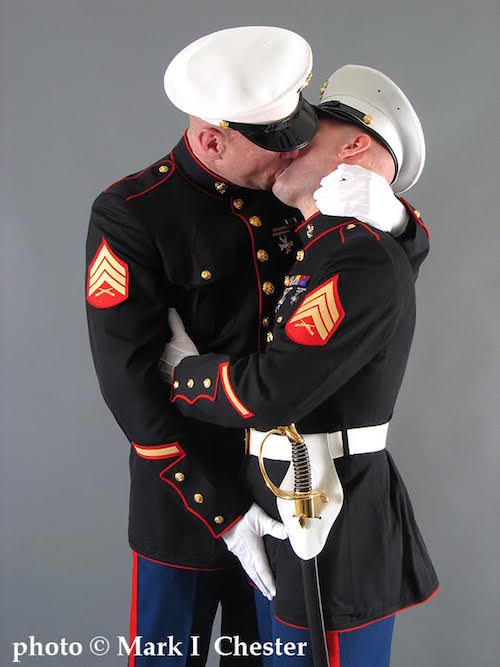
But most of all the pictures are hot: explicit and raw, loving and frank, celebratory and documentary — of magical rituals, of sexuality in the time of AIDS, of leather’s transcendent multicultural and gender-inclusive nature. I spoke with Chester in preparation for his Fri/18 slideshow talk, during which he’ll tell the story of his photographs, and also of “stubbornly persisting” as an artist in San Francisco.
48H Congratulations on the book and show — perfect timing, of course, with Folsom Street Fair coming up. I know it must have been a challenge to go back through four decades of work! How did you structure the book, and how you chose what pictures to include?
MARK I. CHESTER The book is set up chronologically from 1977-2015 based on the bodies of work that have come out of documenting those particular time periods. In my case it made particular sense because my work has changed rather substantially — technically, stylistically and emotionally — over the years. While it was not done intentionally, in retrospect, those photographic series seem to reflect the time periods during which they were done.
Help us save local journalism!
Every tax-deductible donation helps us grow to cover the issues that mean the most to our community. Become a 48 Hills Hero and support the only daily progressive news source in the Bay Area.
Choosing some images and leaving out others was one of the most difficult aspects of putting this book together. I felt like I was betraying the people in some of the images by not including them in the book. But I had to keep a sharp focus to keep true to what each body of work was expressing and yet overall represent my work and life accurately.
The book has been an incredible experience to put together. Without the advances into digital self publishing, there would be no way that I could afford to create this book. Because it is digital self publishing on demand, it is not cheap, but it also allowed me to avoid censorship or anyone else’s control that the imagery meet someone else’s standards.
I also need to acknowledge all the people who have donated to support this book because they believe in what I am trying to do. But there is another side to this. I think it is difficult for people to understand how fragile and ephemeral this work is. Just because it exists at this moment, the reality is that one fire or earthquake could wipe out everything I have done over the last nearly the last four decades. Making this book will make multiple copies of some of my images and help insure their survival.
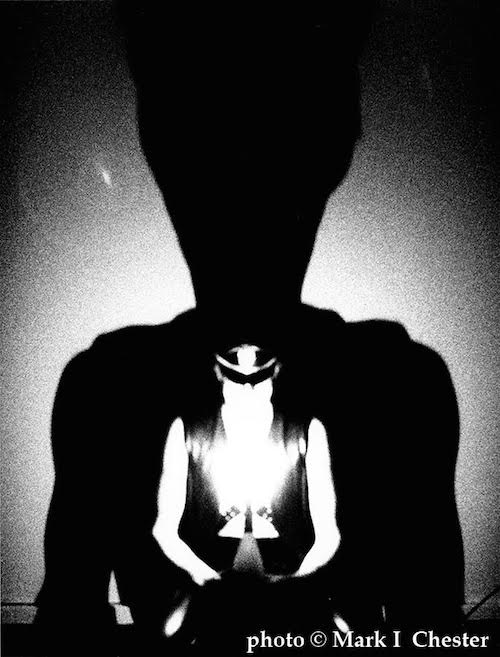
48 HILLS You’ve lived a tumultuous life as an artist in San Francisco. In your introduction to the City of Wounded Boys & Sexual Warriors book, you write, “I’ve been through multiple devastating fires and earthquakes and I have lost work in each one.” You famously survived the Folsom Street Fire of 1981, can you tell us about that period?
MIC After the Folsom Street Fire, my apartment was the the last standing building on Brush Place and Hallam Street And while I lost some things due to the fire, most of the loses were from the actions of people after the fire. While my apartment was under the control of the SF Fire and Police Depts, I lost boxes of photography that just disappeared and a lot of personal sex gear in a room that suffered no fire damage. Fire Chief Caspar was quoted as having said that they were likely to find “bodies dead, chained to beds” in gay “dungeons” in the fire zone.
They didn’t find any bodies, but they found my playroom. So then Mayor Diane Feinstein was paraded through my bedroom, along with the local media. A photograph of my bedroom/playroom was printed on the back page of the San Francisco Chronicle and my bedroom was identified as a “torture chamber.” Posters satirizing Diane Feinstein (when she raised the bus rates from 25 cents per ride to 50 cents per ride) and posters satirizing Dan White disappeared, and a photo of the last Pope laying dead in state also disappeared, selectively, from my walls.
When I finally got access with a lawyer, they wouldn’t allow me to document the damage in photos and threatened to kick me out if I tried. When I got access to remove what was left of my furniture, they had taken a door and nailed it to the doorway of my almost empty bedroom and nailed one of my photographs to the door. I found other personal photographs of my family and friends and sex scenes that had survived the fire were strewn all over the floor and vandalized. Those are the photographs that became “Wounded Art,” which is represented in the book.
I lost my next place to a gay owner move-in eviction, even though the owner had another home that he shared with someone in the Bayview-Hunter’s Point. I moved to where I am now on Folsom and we were damaged by the Loma Prieta Earthquake in 1989. I then had to move out of my flat in 1991 for five months when an arson fire against the building next door (bar and speed freaks) damaged my flat. That was when my landlord started to try to force me to move. He raised my rent to the limit, refused to make repairs … long-term problems remained unfixed. I’ve repeatedly been forced to go to the Dept of Building Inspection to force him to make repairs and I’ve taken him to small claims court twice and won cases against him for failure to make repairs and other illegal actions.

48H I really connected with your statement in the book that “While legalized equality helps heal my spirit, the world remains negative and unaccepting towards those involved in radical sex.” Can you expand on that a bit, and talk about how important it is to continue to document those involved in the world of radical sex? Especially in a changing San Francisco?
MIC Having the Supreme Court stand on the side of marriage equality for gay people and by inference equality in all other aspects of our lives is a great step in the right direction, but there is so much more to be done in the fight for sexual freedom.
As gay people we have something to share with the world about sex and sexual pleasure as part of a full, healthy and complete life. And whether that is the idea that a deep emotional connection does not also require sexual monogramy, or multiple partners, or families of emotionally and sexually connected individuals or sex going beyond missionary position fuck/suck sex, we can teach the mainstream community something positive about being sexual.
I know many people think that the world is too sexual as it is. The problem is that while sex is used to sell everything from burgers to cars, the use of sex for commercialization or titillation isn’t honest sexuality. And particularly when it comes to something like radical sex, it is most often portrayed in the media as something sick and twisted or it is held up for ridicule, as something to be laughed at.
To me photographing my life in San Francisco’s gay sexual underground was a way of validating myself, my sex life and other sex radicals in a culture that disrespected and disacknowledged us. It is the nature of life that as times change cultures change. But what was so stunning was the speed with which that culture, those people and that way of life, simply disappeared. Their sexual portraits not only honor them, but in a way keep them and their lives alive, particularly in a city that seems to be changing even faster these days.
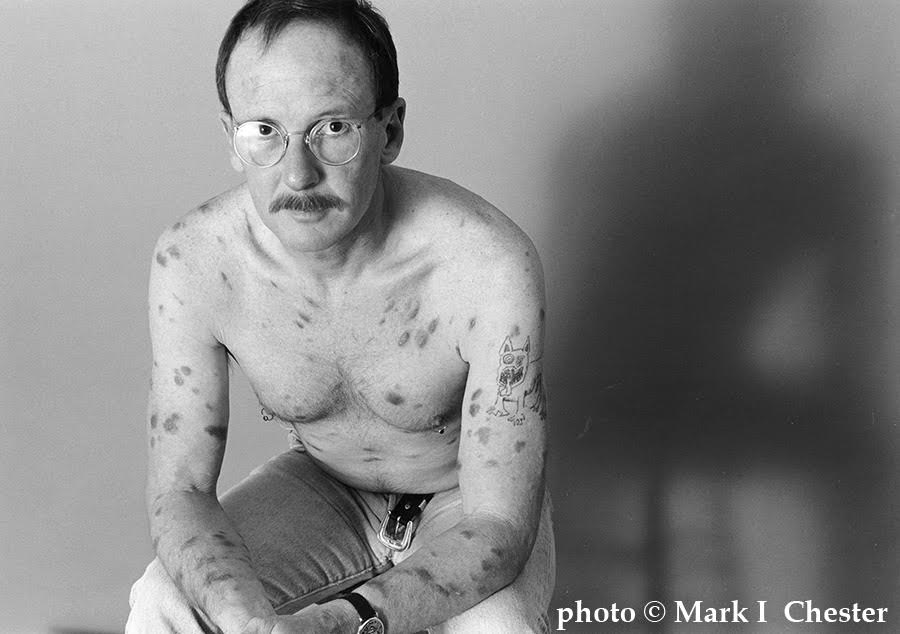
48H The book and show really reflect gay peoples’ journey through the past 40 years — from the sex-heavy ’70s, through the dark years of AIDS, and then into a colorful exuberance, perhaps reflective of impending legalized equality. Looking back, I was especially affected by the “Robert Chesley – ks portraits with harddick & superman spandex” photos. Can you tell me the story behind those?
MIC I like to say that this nearly 40 years of sexual portraits represents a psychosexual social cycle from sexual excess to the devastation of grief and loss, thru spiritual explorations and the glow of sexual healing and finally back to sexual excess once again. I don’t know what the future holds, but I am concerned having gone thru this cycle once already.
The images that you mention “Robert Chesley – ks portraits with harddick & superman spandex” have certainly become part of my signature images. Robert was a well-known gay playwright and writer who had frequently pushed the sexual limit and included both sex and AIDS in his plays. “Jerker,” one of his more renowned plays, caused controversy and problems for KPFK radio when they played a reading of it over the air.
He was my ex and it was particularly difficult for me when he serconverted. I had taken various photographs of him over the years and I wanted to do a show all of portraits of him. In order to do that, we both felt that it was necessary to document the fact that he had AIDS and ks lesions. It was a very difficult shoot to do. Robert was lucky in that his face was fairly free of lesions. But I was shocked when he took his shirt off. There were angry red lesions all over his chest, stomach, and arms and it literally took my breath away.
I did these photos of him in 1990 and at that time there were two basic kinds of AIDS imagery. Photographers like Nicholas Nixon did horrifying photographs of gay men dying of AIDS in hospitals. At the opposite end were exhibitions of glamorous photographs of people with AIDS. We wanted to do something different. We were determined to take photographs that were about life and living rather than death and dying.
When I was done, Robert with a glint in his eye asked if I was willing to take more photographs of him. He disappeared for a moment and returned with a spandex superman outfit. Superheroes flying free were some of his special erotic fantasies. And as he dressed in spandex, his dick started to get hard. He commented that while he was having a more difficult time these days getting his dick hard, that he seemed to have no problem getting hard in front of my camera.
I think it was his way of saying that if you had to define him, then defining him as a spandex fetishist was as accurate a description of him as was a gay man living with AIDS. The series is about transformation and deals with a range of complicated emotions including sorrow, grief, sexual turn on, excitement, etc. A gay man with AIDS, a symbol of disease and death is transformed into superman, a symbol of a superhero, strong and powerful and impervious to such human diseases as AIDS. He becomes both identities at the same time.
The series of Robert is being included in Jonathan Katz’ groundbreaking upcoming traveling museum show ‘Art AIDS America‘ which opens at the Tacoma Museum of Art on October 3. It will be the first time that a photograph of mine will be shown in a museum in the continental US.
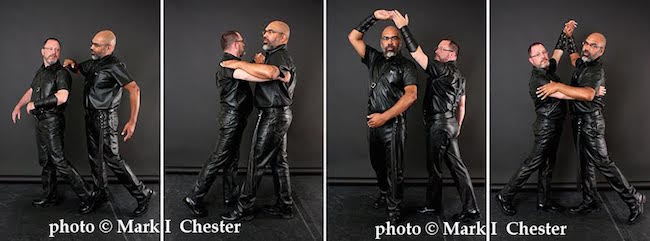
48H I love that your photos aren’t just limited to white gay men — you have an abundance of diversity present. How important is that element for you?
MIC Very important. But I haven’t done so as a political statement or intentional act. I have always included men of color in my work because I have always had men of color in my life. My first lover, Frank, was half Filipino, quarter Swedish and quarter Alieut Indian.
There is no question that the gay world suffers from the same exclusion, or marginalization, of anyone who is not white — and gay erotic work is no different. If you look at current gay photography, it is often exclusively of white men. When I recently had a portfolio of my work included in a gay photo anthology, the editors removed all the images of men of color and only included my photographs of white men.
But I’d like to push the limits even further including men who are normally ignored in gay erotic photography. My work includes men who wear glasses, a leather dwarf who was a top and his full-sized bottom lover, a friend whose fingers were about to be amputated due to meningitis, a gay orthodox leather jew, and as we have already mentioned photographs of my ex Robert Chesley with ks, to name just a few. Even my photographs of more traditional leathermen don’t fall into the current standard of white, super muscular, buff and young.
48H Can you tell me a little about what you have planned for the live talk on Sept 18?
MIC The slide show talk will cover the entire range of my photographic work from 1977-2015 along with commentary about myself and the times. So in some ways it is similar to the book, but I also have the freedom to include personal images of myself and other images that didn’t really fit into this book. While it is for adults only, it is not for the faint of heart. It is direct, honest, intense, and confrontational. But then so is my life. 😉
MARK I. CHESTER: CITY OF WOUNDED BOYS & SEXUAL WARRIORS
Gallery show through September at the Center for Sex and Culture
Opening party and slideshow talk: Fri/18, 6:30pm-10pm, free
Order a copy of the four-decade retrospective book here.




